Italian Elegance in 12 Renowned Paintings and Where to Find Them
- 1. Mona Lisa by Leonardo da Vinci
- 2. The Last Supper by Leonardo da Vinci
- 3. Birth of Venus by Sandro Botticelli
- 4. Primavera by Sandro Botticelli
- 5. The School of Athens by Raphael
- 6. Raphael's Transfiguration
- 7. The Sistine Madonna, by Raphael
- 8. Last Judgment by Michelangelo
- 9. The Creation of Adam by Michelangelo
- 10. Bacchus and Ariadne by Titian
- 11. Venus of Urbino by Titian
- 12. Caravaggio's Beheading of St. John the Baptist
Italy has given the world some of its best painters. Remember the Renaissance from the 14th to the 17th century?
That was Italy's golden age. Italian artists shaped European art and culture in a big way. Want to see some iconic Italian art? Here's where to find them.
1. Mona Lisa by Leonardo da Vinci
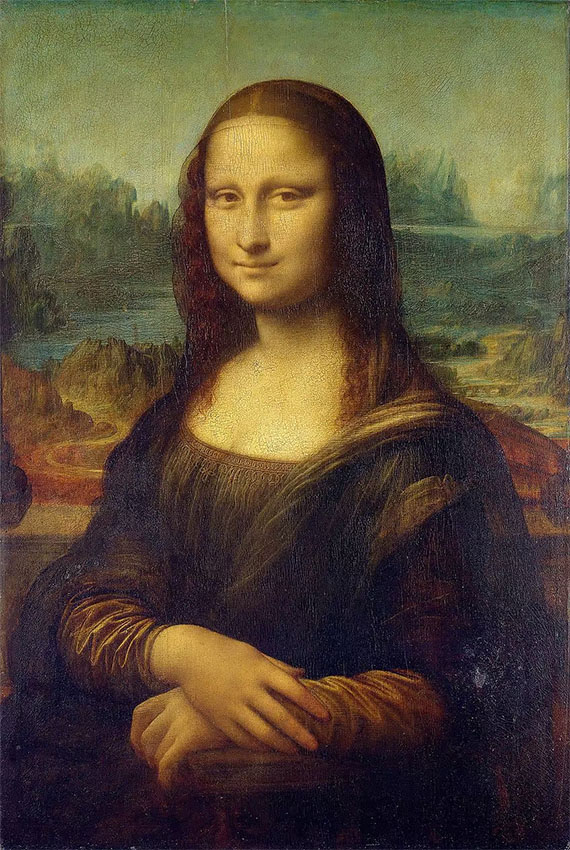
Everyone knows the Mona Lisa. It's famous and has been talked and sung about and even made fun of more than any other artwork. Leonardo started painting it in 1503, which took four years to finish. It's a portrait of Lisa del Gherardini, a lady from Florence. Her husband, a rich silk merchant, wanted this painting to celebrate their new house and their son Andrea's birth. It's not a big painting, just 77 cm x 53 cm, but it's priceless.
Da Vinci never received payment for his painting, and neither did the couple.
Leonardo da Vinci, a famous Italian painter, was invited by Francis I to France in 1515. The artist traveled across the mountains by mules from northern Italy, carrying his sketch pad and some pictures with the Mona Lisa among them. The painting was given to the King as a present and displayed in Fontainebleau's palace.
Da Vinci passed away in the Chateau de Clos Luce, in the Loire. Louis XIV later moved the painting from Paris to Versailles, where it was exhibited for a long time.
The Mona Lisa can be seen today in a room in the Louvre, Paris. It has a glass roof. The painting is displayed in a specially designed, thermostatically controlled case.
2. The Last Supper by Leonardo da Vinci
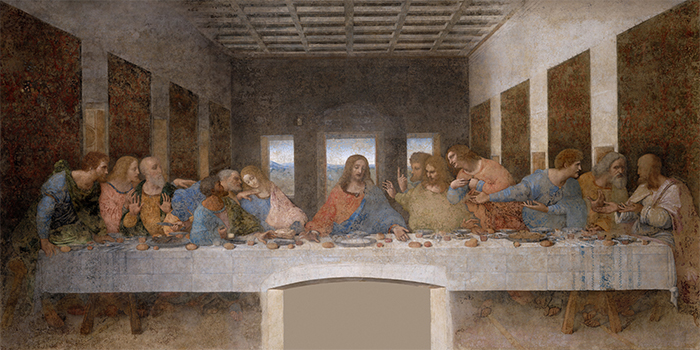
This beautiful painting has been studied and copied many times. Leonardo da Vinci painted the original, measuring 4.5 x 8.8 meters on the wall in the dining room of the convent Santa Maria Delle Grazie of Milan. The painter was trying out a new painting technique. He primed the wall and then began painting with tempura.
Tempura is an egg-based paint. Da Vinci wanted to experiment with this new technique because wall frescos this large were usually painted on wet cement, and they needed to be done quickly as the plaster dried so fast. Da Vinci was looking to use intricate details to convey expressions in The Last Supper.
Unfortunately, the experiment failed, and the paint started flaking within a few years. In just 50 years, the painting had been ruined. The restoration attempts made the situation worse. During World War II, vibrations from Allied bombings damaged the painting even more. Restoration work was started in 1980. It took 19 years for the work to be completed, and much of its original detail had been lost.
The Last Supper shows Jesus eating with his apostles just before his arrest and crucifixion. Leonardo da Vinci’s painting depicts the moment Jesus tells one of his disciples to betray Him during the meal. The apostles are shocked and angry.
Italy's most famous attraction is the painting of The Last Supper. Due to the size of this convent, there is only room for 25 people at one time. Booking your visit well in advance is recommended - on average, two months.
Santa Marie Delle Grazie, a working convent, is where visitors must dress modestly. If they do not, then they will be turned back.
3. Birth of Venus by Sandro Botticelli
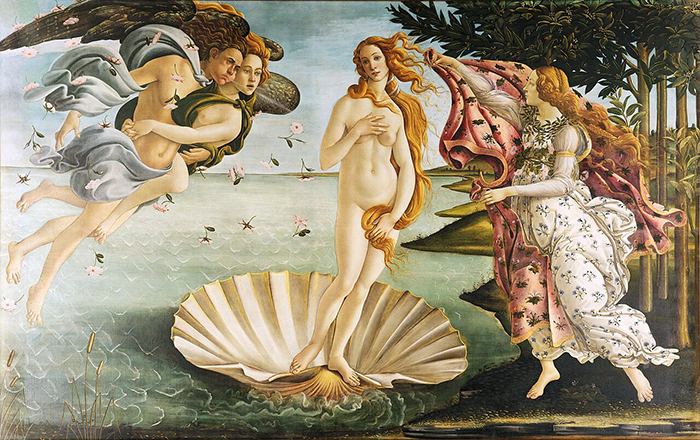
Sandro Botticelli was born in Florence, the birthplace of the Renaissance. This painting is his most famous work and is a Renaissance icon. You can see his paintings in the Sistine Chapel in Rome.
The Birth of Venus measures 1.72 cm by 2.78 cm, which is a large painting. This means the portrayal of Venus as the goddess of beauty and love is almost life-size. Botticelli stitched two canvases to create the dramatic size of his work. He painted it in tempera and added gold leaf.
The painting was started in 1495, and took one year for him to finish.
The painting depicts Venus, the goddess of love and beauty. After her birth, Venus was brought ashore in a giant shell. The goddess appears as a female emerging from the ocean. Aphrodite, her Greek name for the goddess, arrives on a beach in Cyprus. You can visit the beach where she landed, Petra tou Romiou. It is located on the south coast of Cyprus, halfway between Limassol & Paphos.
Botticelli’s painting shows the beauty of the goddess as she is blown to shore by Zephyr, the god of West Wind. Beautiful flowers fall from the sky in her welcome.
The Birth of Venus is displayed in Florence's Uffizi Gallery, along with Botticelli’s other large mythological painting, Primavera.
4. Primavera by Sandro Botticelli

Sandro Botticelli, a prolific 15th-century painter known for his large-than-life works of art, was one of the most prolific painters in history. Primavera was painted by Botticelli when he returned home to Florence after living in Rome while completing frescoes for the Sistine Chapel.
Primavera celebrates spring. Lorenzo di Pier Francesco de Medici commissioned Botticelli to paint it as a present for his bride in 1480. They would then display the painting on their Villa di Castello estate. This painting is considered to be one of the best early Renaissance pieces.
After all his work in Roman Catholic iconography, Botticelli aimed to picture Roman Mythology. He did this with The Birth of Venus and the painting. Primavera, a tempera painting of 202cm by 304cm size, is another large painting. It shows a forest from mythology. Venus, dressed in Italian clothing from the time, stands beneath an archway made of oranges and orange blossoms.
Cupid, her son, is shooting an arrow above her at the three Graces: Pleasure (the first), Chastity (the second), and Beauty. Mercury, the messenger of gods, is visible, as well as Zephyr, god of the west wind. The nymph Chloris can be seen standing next to Zephyr. In mythology, Chloris becomes Flora, the goddess of spring.
The detail in the painting is incredible. Botticelli cleverly incorporated 500 plants, including 200 flowers, to celebrate spring.
The Uffizi Gallery, Florence, displays Sandro Botticelli's famous Primavera and The Birth of Venus.
5. The School of Athens by Raphael
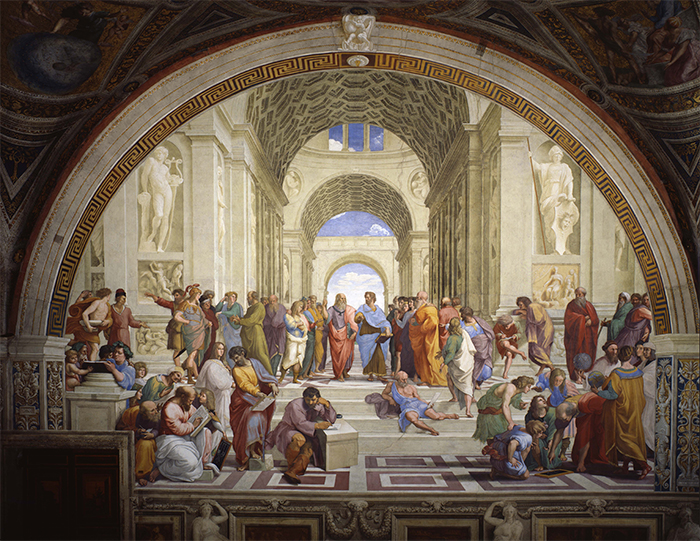
Raphael Sanzio was an Italian architect and painter who lived in Urbino. His father, a painter, was also a man of culture. Raphael's father died when Raphael turned 11, but he had already introduced him to philosophy and inspired him through his paintings. Raphael was already a gifted artist by the age of 16.
Pope Julius II invited Raphael to Rome to paint frescoes on the walls of four rooms at the Stanza Della Signatura, the Papal Palace located in the Vatican City. Pope Julius II asked Raphael to paint wall frescoes in four rooms of the Stanza Della Signatura at the Papal Palace, located right in the heart of the Vatican City.
The School of Athens, one of the four frescos that make up the first stanza of this poem, is only one of them. The School of Athens is a traditional fresco painted on wet plaster measuring 5 x 7.7 meters. The School of Athens is a fresco of 5 x 7.7 meters painted traditionally on damp plaster.
Plato and Aristotle are seated in the middle of the picture, discussing - they represent two different schools. Socrates is wearing a brown tunic. Pythagoras, known for his architecture or geometry, can be seen in the background. Euclid is shown showing two students the proper way to use a compass. Ptolemy is holding a globe to the right. Raphael is just visible between the two men. He stands opposite Zoroaster, an astronomer.
The Raphael Rooms can be accessed as part of the Vatican Museums' general admission. These rooms are located in the Sistine Chapel. They are well-marked but easy to miss.
6. Raphael's Transfiguration

Raphael's last masterpiece was attributed to Cardinal Giulio De Medici, later Pope Clement VII. The Cardinal planned to donate the painting to Narbonne Cathedral, France.
Raphael started painting this large work (410 X 289) in 1516. He used oils on wood. Raphael never finished the painting as he passed away prematurely at age 37 in 1520. Giulio Romano, one of his students, finished the painting. The Pope was fond of the painting and did not wish to give it up. He kept it for himself and donated it later to the Church of San Pietro.
The Transfiguration can be divided into two distinct halves. The top half depicts Christ's Transfiguration on Mount Tabor. Christ is raised, surrounded by a brilliant glow and puffy clouds. The prophets Elijah, Moses, and the people below him shield themselves from the light.
The lower half is painted in much subdued tones and depicts the apostles attempting to perform a miracle on a boy possessed by evil. The bright shaft of light that shines on the boy represents Christ performing a miracle.
The Vatican Museum houses the painting of Transfiguration.
7. The Sistine Madonna, by Raphael

Madonna di San Sisto, also known as the Madonna of San Sisto, is a Renaissance painting that is very well-known. The church of San Sisto, Piacenza, is the name given to this oil painting. Pope Julius II ordered the painting for the altarpiece in the church in 1512. The painting was finished in 1514.
The Madonna is depicted standing on clouds, holding her son. St. Sixtus is on one side, and St. Barbara is on the other. Two cherubs are under the clouds. The painting has caused a lot of discussion because both the Madonna and the child look sad, and St Sixtus points out the painting.
The expressions of the two women can be explained because the painting was placed behind the choir screen, facing a crucifix attached to the screen. With her child, the Madonna looks at the crucifix and knows the future will be there. St Sixtus also points out the crucifix from the painting.
In 1754, King Augustus III purchased the painting in Dresden for his collection.
Gemaldegalerie Alte Meister, Dresden, is displaying the Sistine Madonna today.
8. Last Judgment by Michelangelo
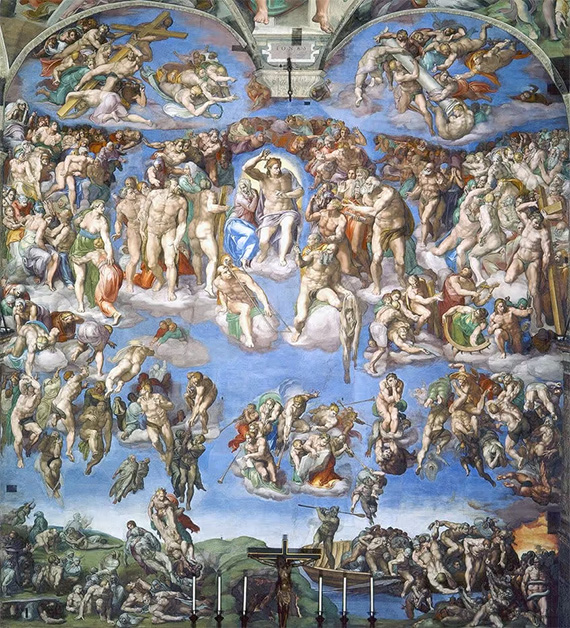
Michelangelo Buonarroti is a painter, sculptor, and architect who was also a poet. Last Judgement, commissioned just days before Pope Clement VII's death and covering the east wall behind the Sistine Chapel altar, is his work. This stunning fresco is very similar to Michelangelo's magnificent ceiling, which depicts scenes from Genesis.
Last Judgement, measuring 13.7m x 12m, was Michelangelo’s second-largest fresco. It took him four full years to complete it (1536-1541). Because 25 years passed between the two frescos, art lovers can see an apparent change in Michelangelo’s artistic vision and style.
The fresco shows the Second Coming of Christ and God's Last Judgment on humanity. The fresco contains more than 300 figures. Michelangelo painted the painting, but it was controversial because the males and the angels were shown in their nude state. The figures are clothed in many cases, and those that remain naked as a sign of humiliation are the damned.
Christ is surrounded by his mother, the apostles, and San Pietro, holding the keys of heaven. The bottom half of the painting depicts Hell, with a red sky in the background.
Michelangelo had to prepare the wall before he could start painting. It was decided to make the wall thicker in the upper part and thinner at its bottom, increasing visibility and reducing dust. Michelangelo is the most radical of the many paintings depicting the same theme. Other paintings depicting the same theme were often placed above the west door to remind the congregation of what they might face as they left the church.
You can see the Last Judgment in the Sistine Chapel in Vatican City. The Sistine Chapel is only accessible as part of the Vatican Museums.
The use of cameras is not permitted in the Sistine Chapel.
9. The Creation of Adam by Michelangelo
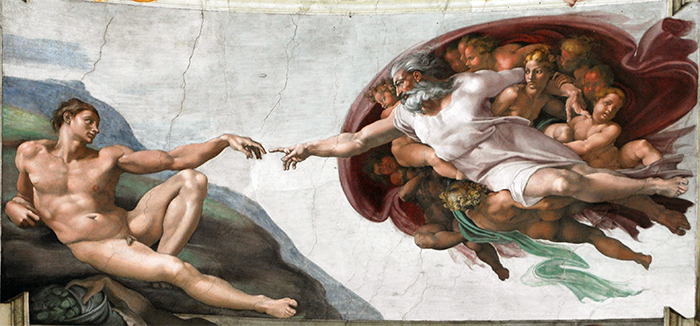
The most famous painting in the Sistine Chapel is this one. It depicts scenes taken from the Book of Genesis. Michelangelo painted on the ceiling using wet paint while standing on a wooden board 20 meters above ground. The painter is often seen rubbing his neck.
The Creation of Adam depicts Michelangelo on the right, with Adam on the left. God's hand almost touches Adam as he gives him life in The Creation. Adam's scanty clothing is a big draw for art lovers. Michelangelo, who was first and foremost a sculptor, is also a sculptor.
In addition, the painter's depiction of God differs from those of his contemporaries. They painted
God in Royal clothing and as a powerful ruler. Michelangelo’s painting depicts God as a muscular, grey-bearded figure wearing a simple light tunic.
10. Bacchus and Ariadne by Titian
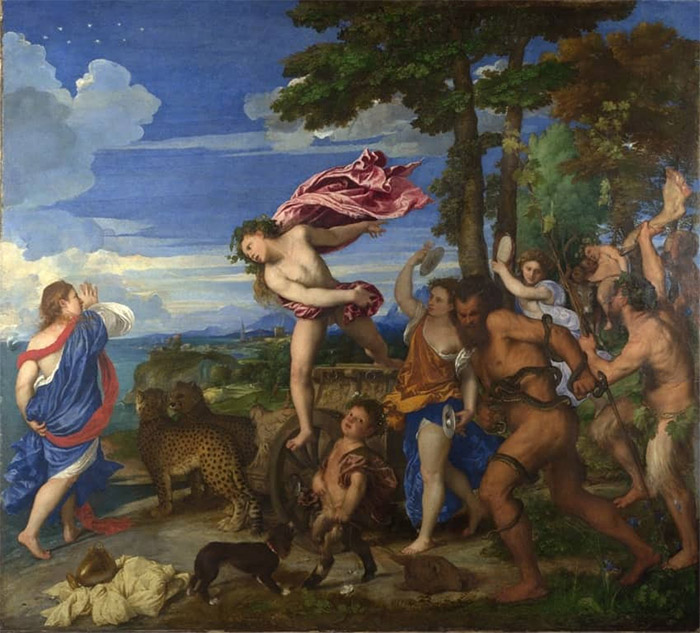
Titan painted Bacchus and Ariadne in oil in 1522. It took him a year to finish. Tiziano Vecelli, or Vecellio as he is known in English, was a Venetian artist during the Renaissance. The painting was part of a series of mythological paintings commissioned by Alfonso I d'Este, Duke of Ferrara.
The paintings were for the Camerino d'Alabastro, a room within his palazzo at Ferrara. The Duke's dream was to display the great Italian artists together.
The painting depicts a well-known mythological tale. Ariadne fell in love with Athenian hero Theseus. Together, they sailed from Crete to Knossos to slay and challenge the Minotaur. They were successful. Theseus left Ariadne on Naxos while she slept. As she walked along the shore desperately searching for his ship, Ariadne surprised Bacchus, the god of wine.
He fell in love instantly with her. She became his mortal spouse, and he gifted her the sky. In time, she was transformed into a beautiful constellation. Bacchus & Ariadne captures the moment Bacchus & Ariadne met on the shore, and Theus' ship can be seen on the horizon.
The National Gallery of London owns 19 Titian paintings, including Bacchus and Ariadne. It is on display in Room 35.
11. Venus of Urbino by Titian

This is one of Titian’s most famous paintings. This painting was commissioned in 1534 by Guidobaldo Della Revere to celebrate Gila Varanasi's marriage.
This oil painting depicts Venus as a bride about to get dressed for her marriage. Venus of Urbino, a painting by Titian that shows a nude Venus lying in palazzos with lavish decors, is considered one of his most sensual works. A dog is seated in the background. It's a symbol of loyalty and was probably Guidobaldo’s pet. Two maids sort clothing items that her husband's family had given her.
Venus of Urbino on display in Florence's Galleria degli Uffizi
12. Caravaggio's Beheading of St. John the Baptist
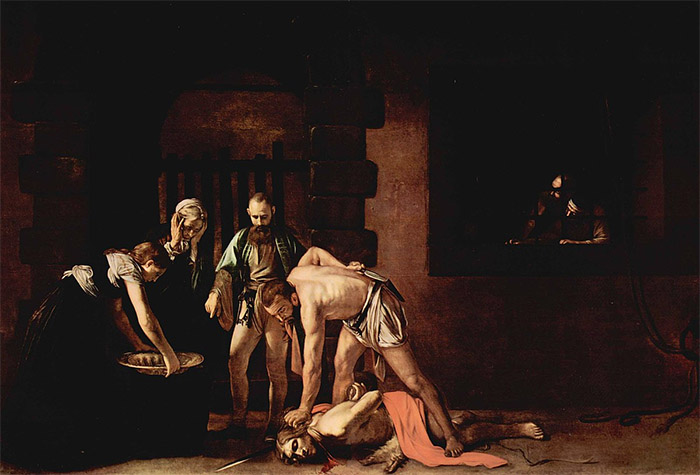
This painting, measuring 370 cm by 520 cm, is the most critical and largest work by Michelangelo Merisi Da Caravaggio (also known as "Caravaggio"). This painting was created in oils in 1608. At that time, the subject of John the Baptist's death was very popular. Caravaggio painted this for the Knights of Malta and the Cathedral of Malta because John the Baptist is the patron saint of both.
Caravaggio's dramatic painting depicts John Baptist lying on the ground, dressed in his traditional red cloak. The sword has partially severed his head, and the executioner reaches for a dagger to complete his task.
Salome holds a platter to receive the severed heads while the woman beside her covers her ears to prevent her from hearing the final screams of the Saint. The blood that pours out of the head of John Baptist is used to ink the artist's signature, which is visible in the pool. Caravaggio signed only this painting.
The Beheading of St John, a replica of which is on display in the Knights of the Order of St John's Chapel in St. John's Co-Cathedral, Valletta, Malta.
No Comments Yet...